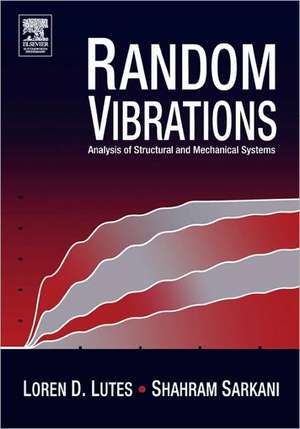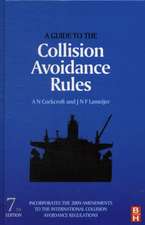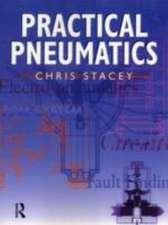Random Vibrations: Analysis of Structural and Mechanical Systems
Autor Loren D. Lutes, Shahram Sarkanien Limba Engleză Hardback – 24 ian 2004
- Provides over 150 worked out example problems and, along with over 225 exercises, illustrates concepts with true-to-life engineering design problems
- Offers intuitive explanations of concepts within a context of mathematical rigor and relatively advanced analysis techniques.
- Essential for self-study by practicing engineers, and for instruction in the classroom.
Preț: 583.47 lei
Preț vechi: 669.18 lei
-13% Nou
Puncte Express: 875
Preț estimativ în valută:
111.65€ • 119.39$ • 93.09£
111.65€ • 119.39$ • 93.09£
Carte tipărită la comandă
Livrare economică 10-24 aprilie
Preluare comenzi: 021 569.72.76
Specificații
ISBN-13: 9780750677653
ISBN-10: 0750677651
Pagini: 650
Ilustrații: 1
Dimensiuni: 175 x 245 x 42 mm
Greutate: 1.31 kg
Editura: ELSEVIER SCIENCE
ISBN-10: 0750677651
Pagini: 650
Ilustrații: 1
Dimensiuni: 175 x 245 x 42 mm
Greutate: 1.31 kg
Editura: ELSEVIER SCIENCE
Public țintă
Students in graduate courses in random vibrations or probabilistic structural dynamicsCuprins
Table of ContentsChapter 1Introduction Chapter 2Fundamentals of Probability and Random Variables Chapter 3Expected Values of Random VariablesChapter 4Analysis of Stochastic ProcessesChapter 5Time Domain Linear Vibration AnalysisChapter 6Frequency Domain Analysis Chapter 7Frequency, bandwith, and AmplitudeChapter 8Matrix Analysis of Linear SystemsChapter 9Direct Stochastic Analysis of Linear SystemsChapter 10Introduction to Nonlinear StochasticVibration Chapter 11 Failure AnalysisChapter 12 Effect of Parameter UncertaintyAppendices A and B
Recenzii
"The textbook by Lutes and Sarkani is a timely and highly valuable addition to the short list of books on random vibrations (or stochastic dynamics) that have appeared in the past two decades. I stress the word “textbook” rather than “book,” since what they have produced is truly a textbook with numerous instructive examples and end-of-chapter exercises. This is a massive undertaking, with over 600 pages, covering a very broad scope of topics in stochastic dynamics. As the authors suggest, the book can be used for an introductory course on random vibrations and, quite plausibly, for a more advanced course with some additional reading. It can also be used effectively for self study by graduate students and professional engineers who have the requisite mathematical background. Lutes and Sarkani use an informal language that takes away some of the intimidating nature of the random vibrations topic and helps put the reader at ease. While maintaining a high level of rigor, they avoid unnecessary mathematical complexity. Because of these factors, I believe this book is more accessible than most other books on this topic. However, the most valuable aspect of the book, in my view, is the physical insight that the authors provide through their extensive analysis and discussion of formulas and results throughout the book. This aspect is particularly important for beginning students of random vibrations – a topic which by its nature is somewhat abstract and not as easy to interpret as deterministic dynamics. When teaching an advanced topic such as random vibrations, it is often difficult or undesirable to strictly follow a textbook. We all have our own preferences on notation, style of formulation, and the sequence of topics to be covered. However, I have found it highly effective to have a reference textbook, where students can do additional reading and see a different viewpoint from that presented in the class. Among several textbooks that I have used for this purpose, students at Berkeley have been most satisfied with the earlier edition of this textbook. With the implemented improvements and additions, I be-lieve students will benefit even more from this new edition. Hence, I strongly recommend consideration of this textbook for courses on random vibrations." -- Armen Der Kiureghian University of California, Berkeley













